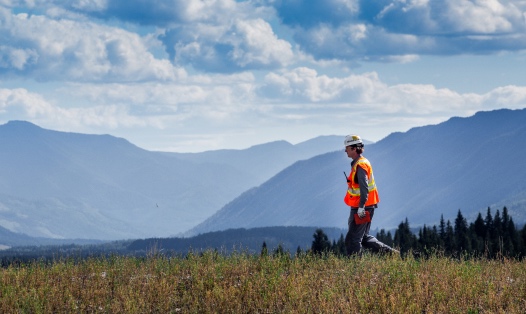These high-tech sensors weather the blast and live to tell the tale.
At our mines, dozens of state-of-the-art, high-tech instruments are being dropped into holes and blown up – all on purpose. It’s part of an innovative technology that we’re putting to work to better track the movement of ore before and after blasting, called blast movement monitoring.
In the mining process, blasting is used to break up solid rock so our shovels and trucks can get at the ore and transport it to the mill for processing. But the location of the ore can change before and after the blast as rock is shifted by the high explosives. That’s where blast movement monitoring comes in.
Colorful, softball-sized sensor balls are distributed into drill holes prior to blasting. Nestled inside each ball, protected by the durable outer casing and a shock-absorbing liquid inside, is a sensor that transmits its location. After the blast, handheld scanners are used to identify where the balls have moved, and that data paints a three-dimensional picture of how the ore body has shifted during blasting.
This information is used by our geologists to maximize the amount of valuable ore that is recovered and sent to the mill, and reduce the amount of waste rock going into the mill. That results in reduced processing costs and improved productivity, as well as improved environmental performance through better energy efficiency. At just one mine – our Red Dog Operations in Alaska – blast movement monitoring is saving an estimated $6.5 million annually.
“The information we get from the blast movement sensors allows us to track the movement of ore in greater detail than ever before, leading to improved productivity and sustainability at our operation,” said Brian Hall, Geologist at Red Dog Operations.
We’re putting ideas like blast movement monitoring to work across our operations. Learn more about our approach to innovation and technology.

